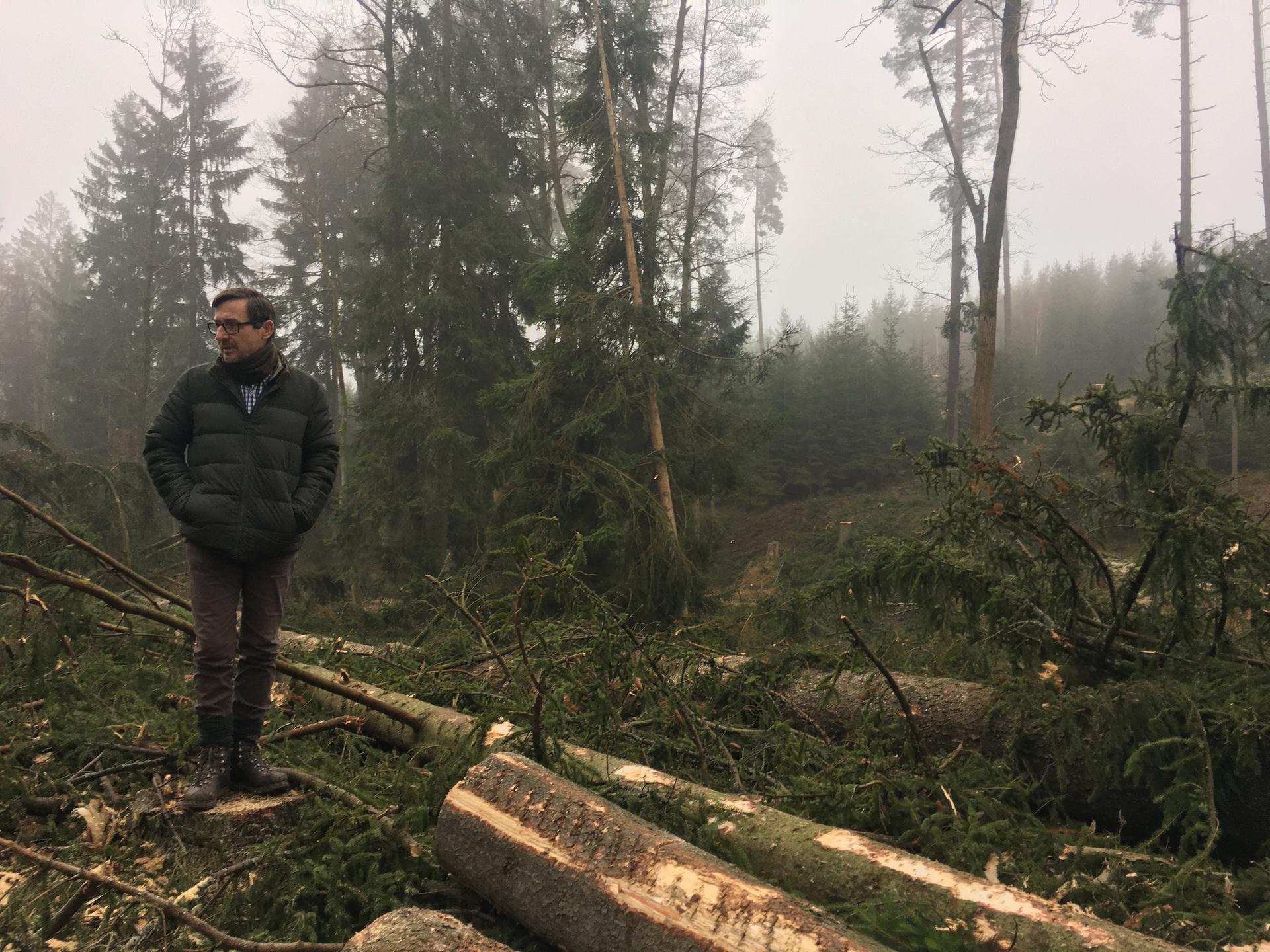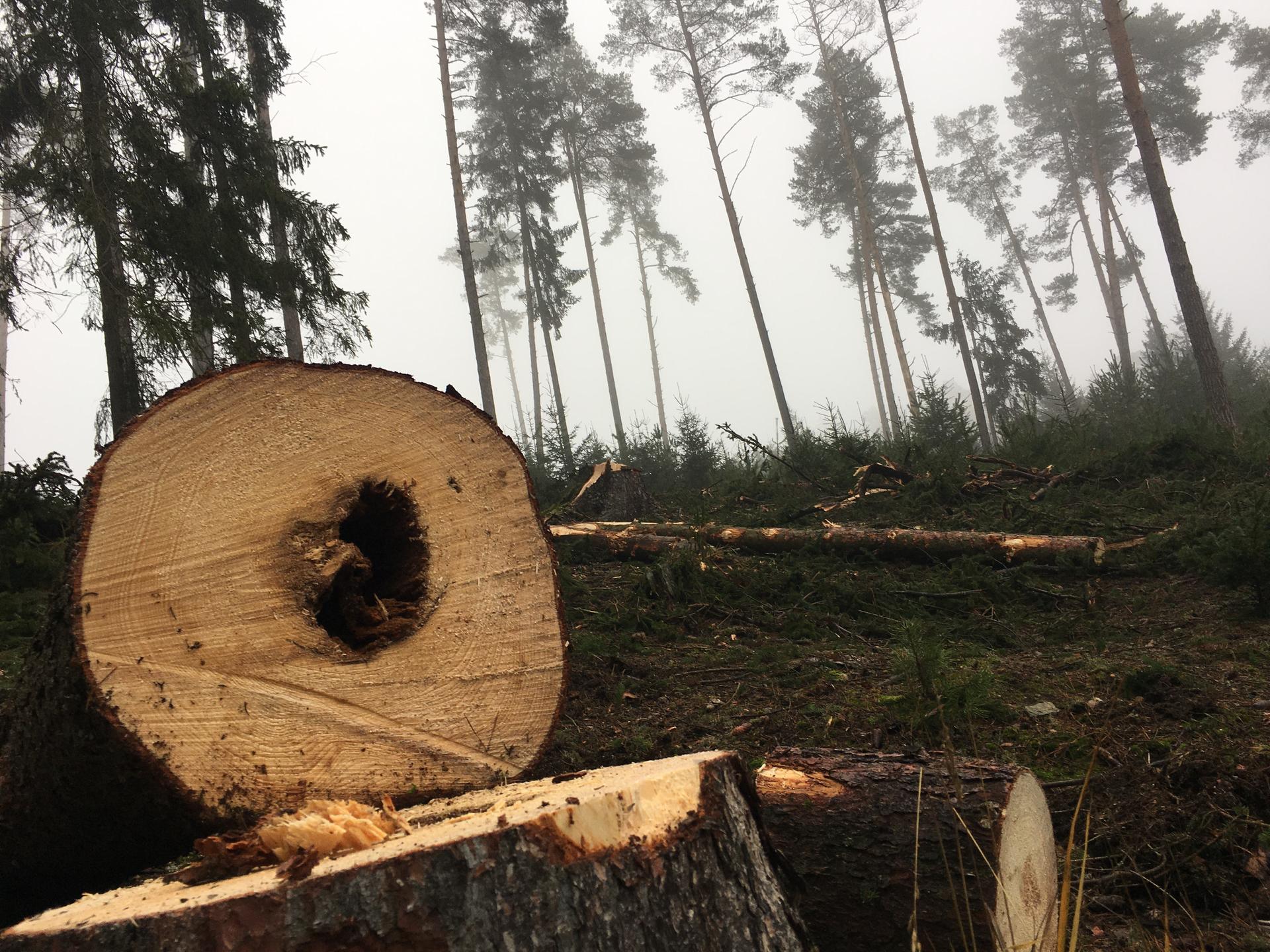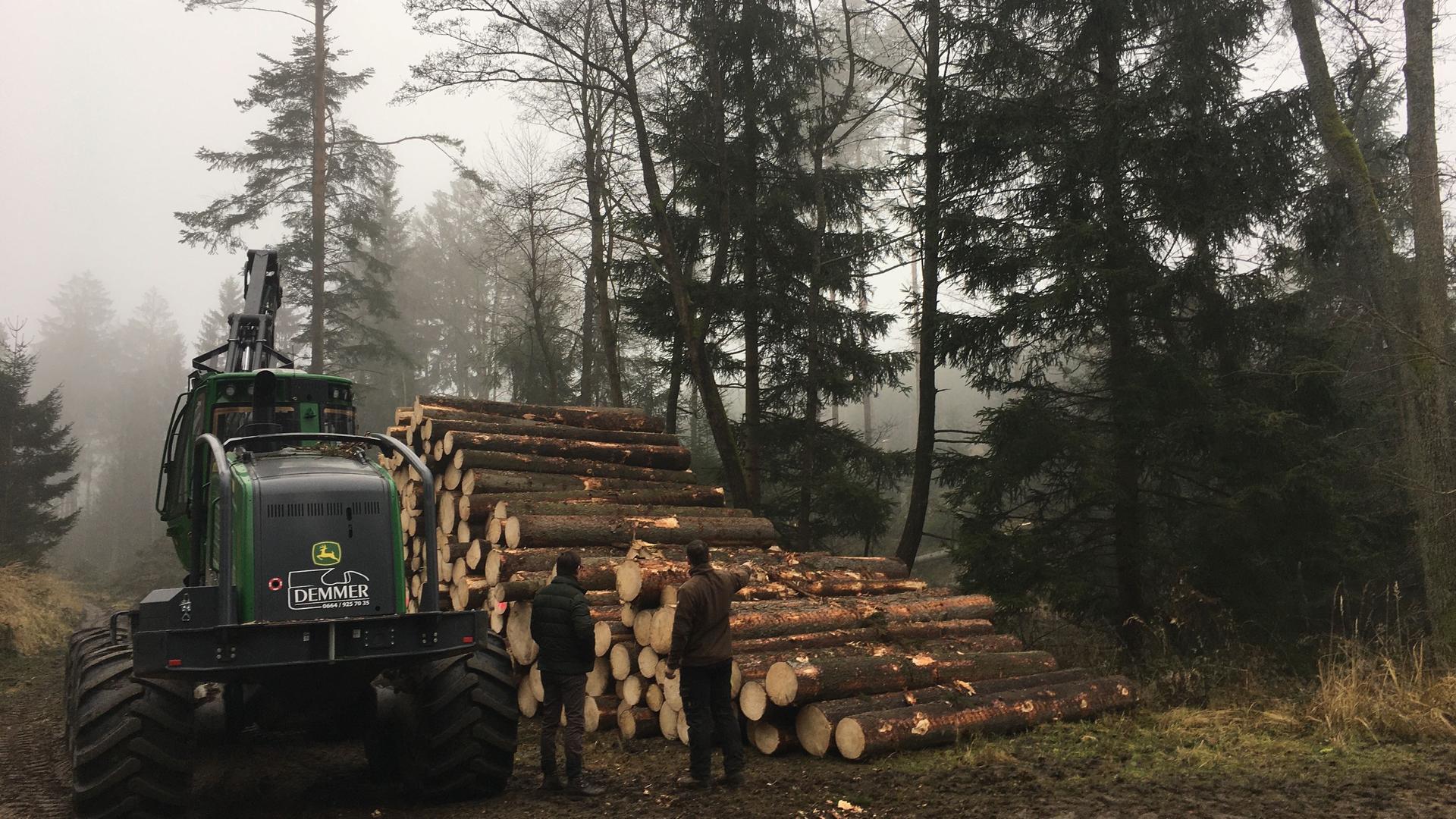Austria’s ‘close-to-nature’ forests may hold secrets to fire prevention
In a region of Austria known as the wood quarter, a logger used a chainsaw to slice through the base of a 100-foot tall spruce tree on a recent foggy morning.
Herbert Schmid, a forester, watched from a distance as the big spruce dropped to the forest floor. Schmid handpicked that particular tree to be cut today. He manages this forest according to “close-to-nature” practices, or Pro Silva standards.
Related: ‘A Field Guide to Climate Anxiety’: Coping strategies for young activists
It’s an ancient technique of astute observation, low-intervention forestry that allows trees to grow and age before harvest. Forestry experts say it’s a valuable model as European forests face climate change and potentially more fires.

Schmid wanted to open up the canopy of this dense, shady section of forest, which has all sizes and species of trees. There are tall, looming firs, tiny spruce saplings with bright green needles — even cherry trees. That species diversity is one reason this and other close-to-nature forests tend to be fire-resilient.
“The more tree variety, the more stable it is. It doesn’t matter whether it’s fire or storm or snow. If I have only one kind of tree, and they’re all the exact same height, it’s prone to any disaster.”
“The more tree variety, the more stable it is,” Schmid said. “It doesn’t matter whether it’s fire or storm or snow. If I have only one kind of tree, and they’re all the exact same height, it’s prone to any disaster.”
More than half of Austria and one-third of Germany is forested, yet those countries haven’t seen extreme fires to the scale of California or Australia in recent years. During last year’s catastrophic wildfire season in the US, President Donald Trump praised Austria for its forest management.
“Austria, you look at so many countries, they live in the forest, they’re considered ‘forest cities,’ so many of them,” Trump told Fox News. “And they don’t have fires like this. And they have more explosive trees.”
Related: The history of the world is written in tree rings
But the reason that Austria and Germany haven’t had megafires recently is part luck. Those countries tend to be cooler and rainer. But climate change is causing hotter, drier summers in central Europe, and the region could see bigger wildfires as the trend continues. Close-to-nature forest management may hold some solutions.
The land that Schmid manages is owned by the Stift Altenburg Monastery in lower Austria. Logging revenue is a huge part of the monastery’s funding, but its natural management timber operation is far from typical.
“Natural management is a play with light and shadow,” Schmid said. “Enough light for the small trees. But not so much that plants like elderberry can take over. You always have to look at how much light comes through the crowns of the old trees, and that is the art.”
When the forest needs more light, it’s time to cut down some trees. Forestry experts say it’s a good model.
“With Pro Silva forestry, you try to mimic the small-scale disturbance with small-scale harvesting.”
“With Pro Silva forestry, you try to mimic the small-scale disturbance with small-scale harvesting,” said Alexander Held, a senior expert with the European Forest Institute.
Pro Silva foresters selectively cut down trees that might otherwise die because of lightning, old age or bark beetles.
“And in these gaps where the old trees fell or died, you have regeneration of … very different tree species,” Held said.
Related: Fighting climate change means focusing on ‘Earth repair’
Close-to-nature forests tend to be lush and moist. In other words, not places that are quick to burn. Still, there are many forests across central Europe that are not managed according to Pro Silva guidelines. The traditional forestry model is based on a cycle of planting dense, monoculture forests where the trees are all the same height, and are harvested as soon as possible so that there’s always an ample supply of timber.

Those conditions are perfect for quick-spreading wildfire. When foresters from fire-prone countries like Greece or Spain visit Germany’s dense monoculture forests, Held says they’re aghast.
“They say, ‘Oh, my God, if this goes up in flames! You’re sitting on a time bomb.”
That’s why Held believes the Pro Silva method is a good model as foresters prepare for more hot and dry weather, or bark beetle infestations, which are increasingly common and devastating across the region.
“This is actually a little secret that makes sense to show to the world.”
“This is actually a little secret that makes sense to show to the world,” Held said.
In the Stift Altenburg Forest in Lower Austria, there’s another little secret to share from close-to-nature forestry: an army of native birds that help with natural forest management.
A few years ago, Schmid wanted to diversify a forest area that was dominated by spruce. Typical foresters might clear all the underbrush and blackberries, and handplant thousands of saplings. Schmid took a different approach.
Related: Brazil’s wetlands ravaged by out-of-control wildfires
“Now, the idea was we collect seeds in our oak forests and put them in a bird feeder,” Schmid said. “The birds know the food is there, and they take the seeds and hide them in the forest.”
The Eurasian jay birds feed on the seeds and hide some for winter. Inevitably, the birds forget about some of their stash, and the seeds grow into saplings. These native birds are essentially Schmid’s forest workers.
In just a couple of years, Schmid says these birds helped plant 25,000 new trees and create a more diverse, fire-resilient landscape.
Schmid says these kinds of natural management techniques are not only easier, they’re also cheap — he’s not paying for herbicides, or human labor to plant trees. It’s actually a return to ancient techniques that he says work.
“That’s the whole idea of the permanent forest,” Schmid said. “You only take out the big trees, and it regenerates itself.”
